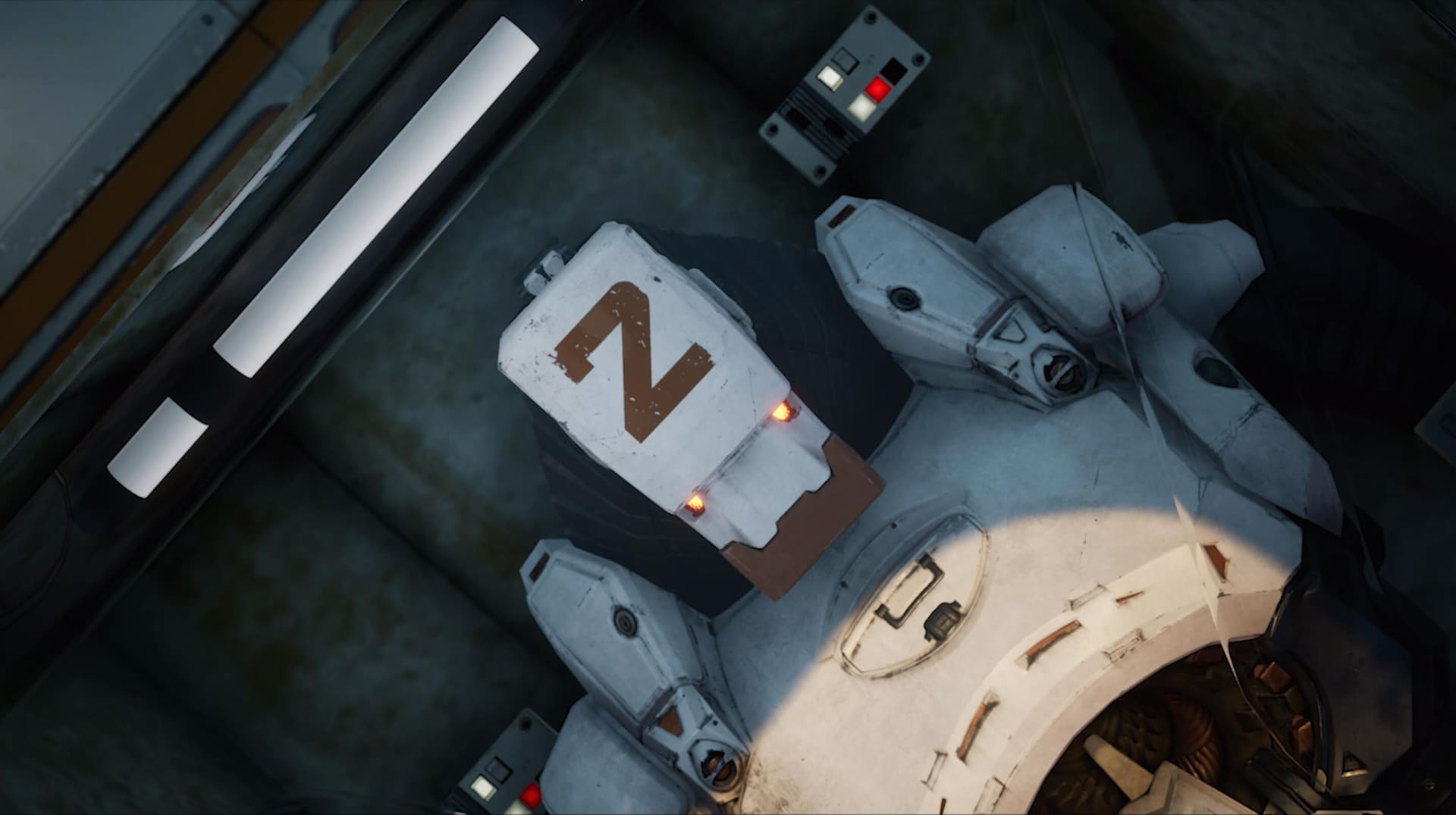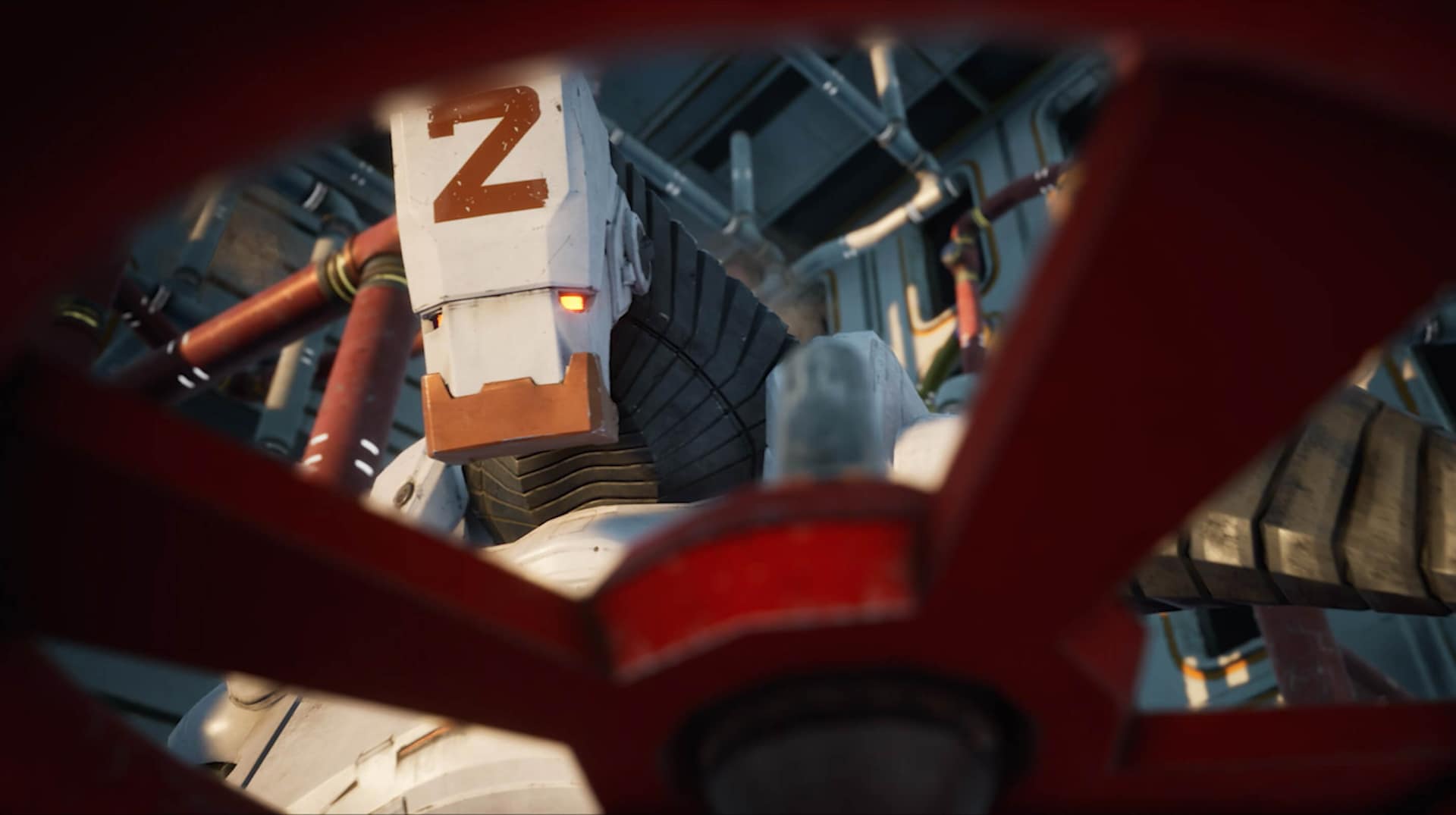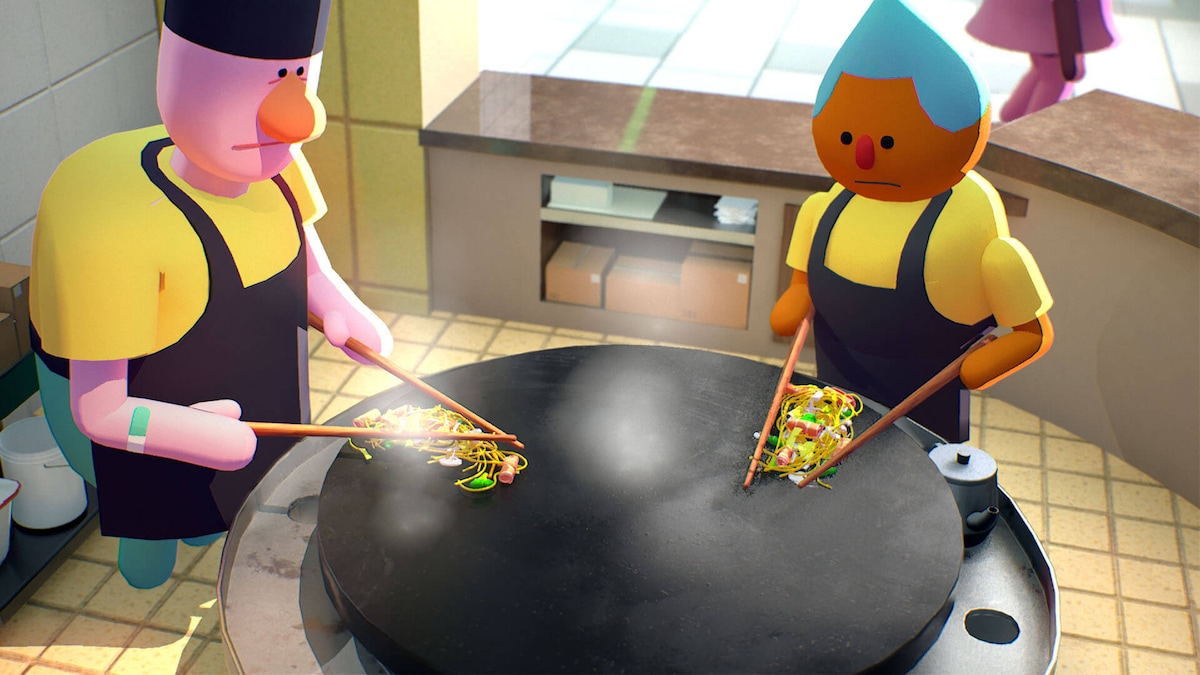Explore three animated shorts from Fortnite’s film festival
Little Bird
Packed full of pathos, animated short Little Bird follows a brave young astronaut as she wrestles with a heart-wrenching choice. The themes explored in the film reflect challenges Chris Perry has faced in his own life. As the writer, director, and founder of Bit Films explains, he moved to Los Angeles in fall of 2019 for work, leaving his family behind on the other side of the country.
“It was very hard for me to be away from them, especially my teenage daughter who was still living at home,” says Chris. “Little Bird is all about a dad and a daughter who want to be reunited across a great divide. The story came to me only a few weeks after I moved and, I’m sure, was a way for me to cope with the regret I felt having left them behind.”
“The Epic MegaGrant made all the difference on this project,” says Chris. “The resources we received from the MegaGrant allowed us to build an incredible crew and take the time needed to do the project the way we wanted to do it.”


Two
Two is a poignant snapshot of the friendship between two robots as their one-way mission to the sun nears its end. The animated short film was created by director and cinematographer Emre Okten.

That need for simplicity informed many of the foundational creative decisions, including setting the story in space, which enabled Emre to use isolated characters, limited environments, and robots as the principal characters, with no need to animate faces or fingers.

As part of a new wave of filmmakers, it’s perhaps no surprise that Emre has a strong belief in the potential of motion capture and photogrammetry. “These technologies are interesting, because they are the starting point of a futuristic effort to replicate physical reality in the digital,” he says. “They not only make it easier to build digital worlds, they provide ways to interact with them naturally as well.”
As someone who dived straight into game engines to make films, Emre provides an interesting perspective on this new, modern way of filmmaking. “Working in real-time is a great way for beginners and independent filmmakers to start making films,” he says. “Since Two, I have used the engine extensively at work, and I’m making a new short film in Unreal Engine as well. I also use it for prototyping ideas—just throw a few things together, make a few images, and get the idea out quickly. It’s great!”

Mall Stories
In documentary-style short Mall Stories, we meet the endearing staff of a fictional food court inspired by real-life eatery Atilla the Grilla. The animated film was created by Elizabeth Ito, creator of the Peabody award-winning hit Netflix series City of Ghosts, who drew inspiration for the main characters from real people working at a real Mongolian Grill in Burbank Town Center.
Mall Stories is the first project Elizabeth has used Unreal Engine on. “I wanted to try out Unreal because I’d seen what Chromosphere had done with it, and was encouraged by Kevin [DART] when I first told him about my mall-related idea,” says Elizabeth. “Kevin felt the style could work really well in Unreal because it handles realistic stuff well, and Chromosphere already knew how to accomplish a stylized look.”

The project got off the ground with support from an Epic MegaGrant. “The MegaGrant afforded me an amazing personal opportunity to experiment with all the things Unreal can do, and to see what it was like to build and produce a whole project in Unreal with Chromosphere,” says Elizabeth.
The team built a complete mall set in Unreal Engine, with working elevators and fountains, which was then used for story development, layout, and shot planning. “This would have been too hard to conceive in our 2D boarding process,” says Kevin.
Using a mix of realistic and stylized shaders, the team was able to achieve a hybrid look similar to City of Ghosts, but in a real-time environment. “The style of Mall Stories is derived from a lot of quirky Japanese video game design, as well as a lot of back and forth with Chromosphere to find a fresh approach to adapt that character style with a more realistic background environment,” explains Elizabeth. “It was an evolution of what we were doing in City of Ghosts, but this time all in real time.”

Another first for Elizabeth was the unique experience of having her film make its world premiere in Fortnite’s Short Nite film festival. “It was fun to see my short being watched inside an extremely popular game,” she says. “Characters come bouncing in, change their costumes, create bean bag chairs for themselves, and all this stuff that is so entertaining to witness. It gave me the feeling of attending Comic Con screenings without having to be crammed in a screening room. I found it exciting and highly entertaining.”
Unreal Engine for animation
Real-time technology and practices reduce barriers to making your animated story, while opening new workflows and opportunities to studios and indie artists. “I made Two mostly by myself in my bedroom,” says Emre. “My biggest lesson was that I don’t have to wait for permission, or a rare opportunity, or gather a ridiculous budget to make the films I want to make and see.
“Real-time CG is the true democratic revolution of filmmaking. It’s a far more efficient and lean way of making films—and it will only get easier.”
If you’d like to learn more about real-time workflows for animation, check out The Future of Animation, our celebration packed with real-time techniques, insider stories, case studies, a brand-new Animation Field Guide, and highlights from the Annecy International Animation Film Festival.

熱門頭條新聞
- CGGE Global and Shenzhen Polytechnic University join hands to create a new future and drive a new chapter in digital media education.
- “AI Godmother” Fei-Fei Li Discusses the Importance of “The Voice of Humanity”!
- Global Game Jam Partners with Games for Change for the First G4C University Student Challenge
- Qualisys: Streamlining Mocap Today, Exploring What’s Next
- XSOLLA AND UKIE ANNOUNCE PARTNERSHIP AT GDC 2025 TO EMPOWER GAME DEVELOPERS IN THE UNITED KINGDOM AND THROUGHOUT EMEA
- “One of the Best Platformers of 2025” Ruffy and the Riverside Announces June 26th Release Date on PC & Consoles!
- Overwatch star Matilda Smedius to host NG25 Spring!
- SAG-AFTRA National Board Meets via Videoconference










